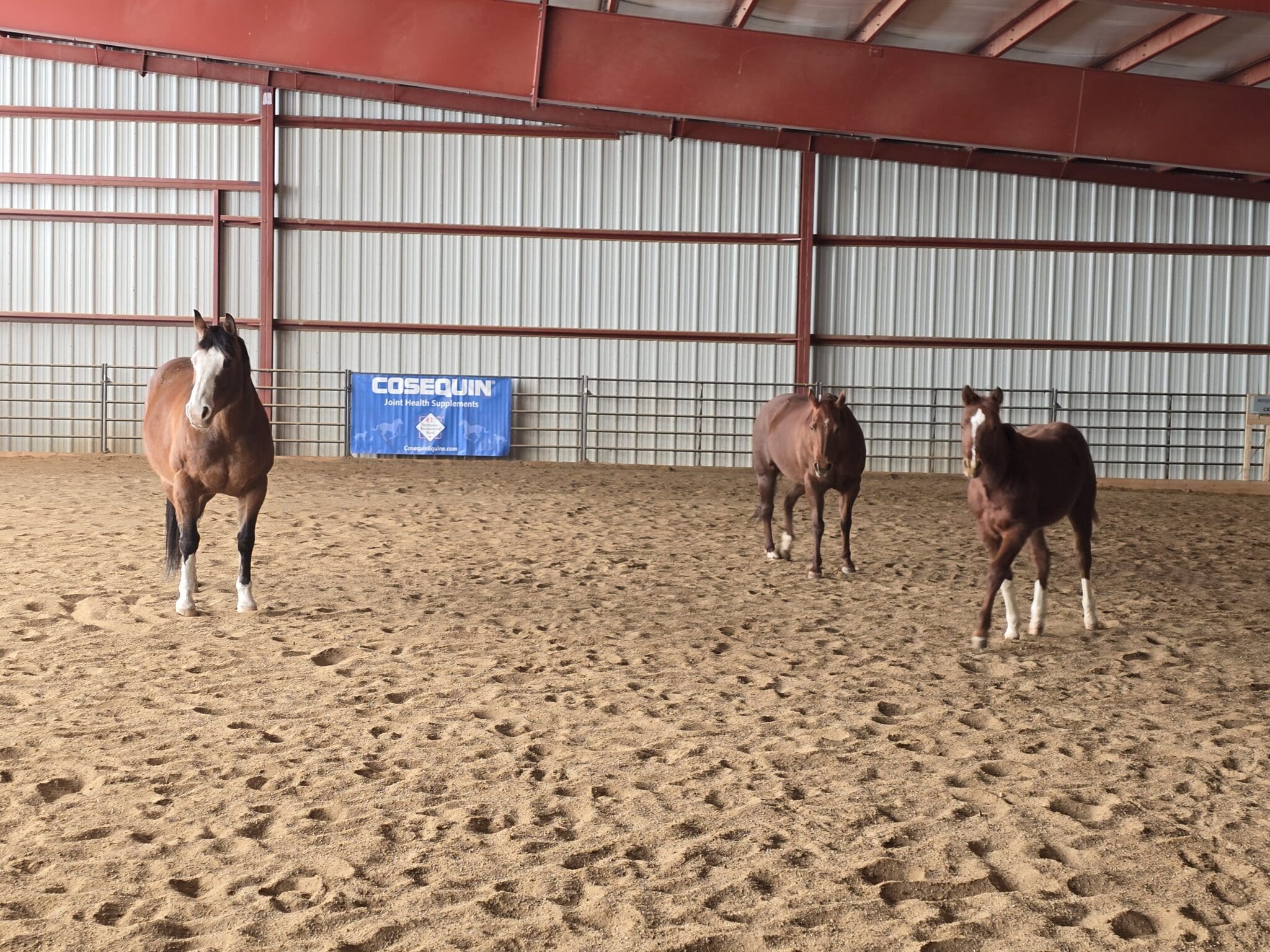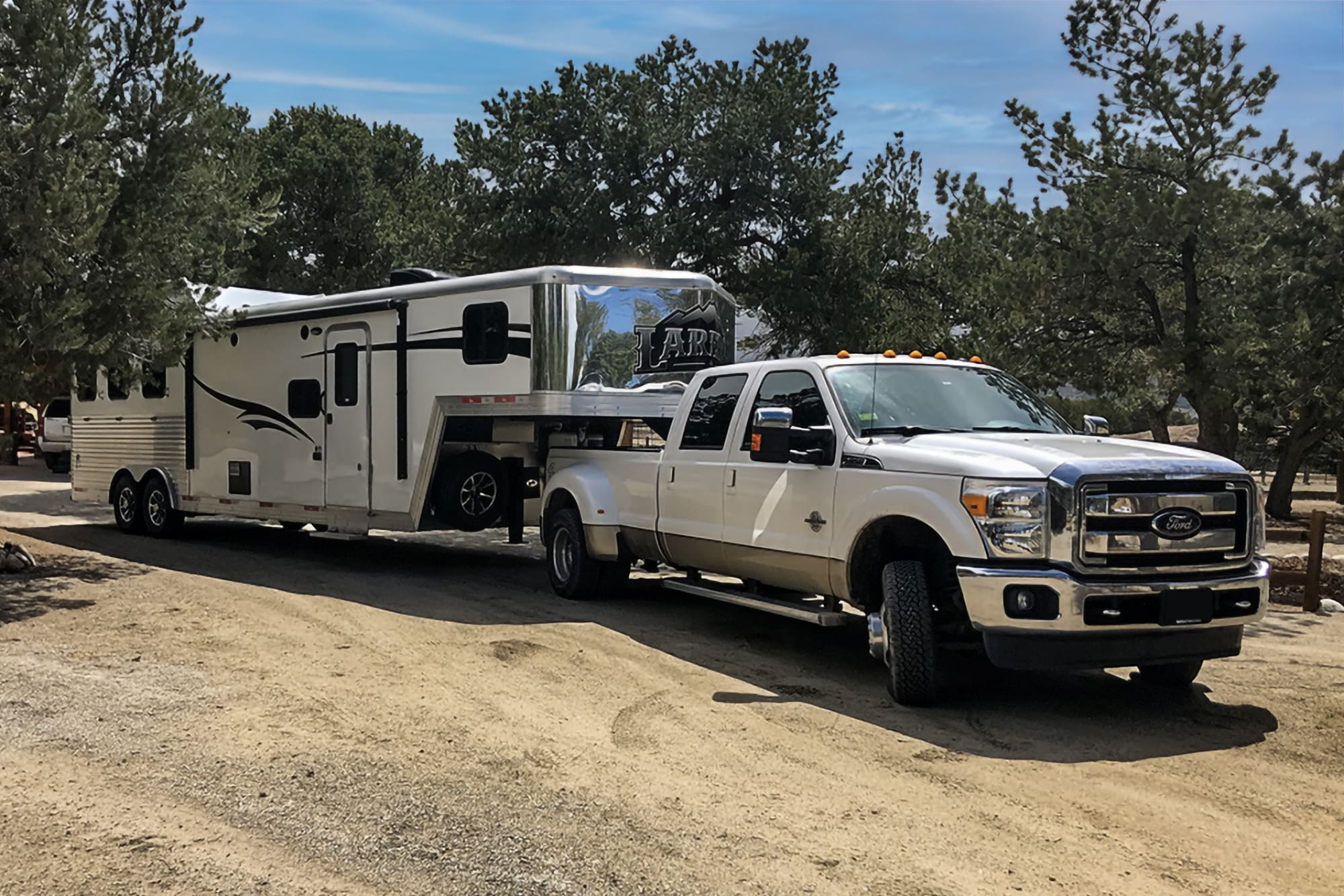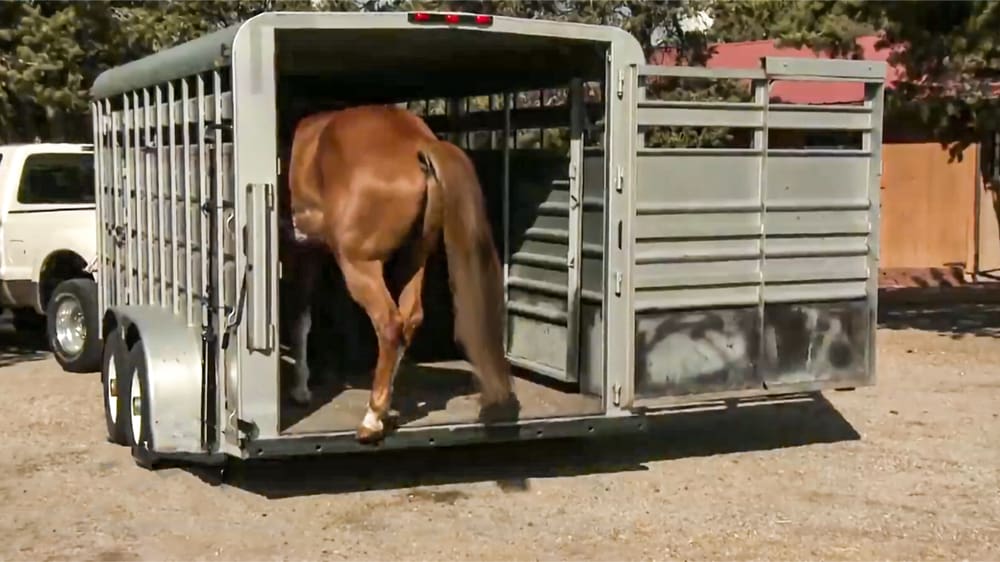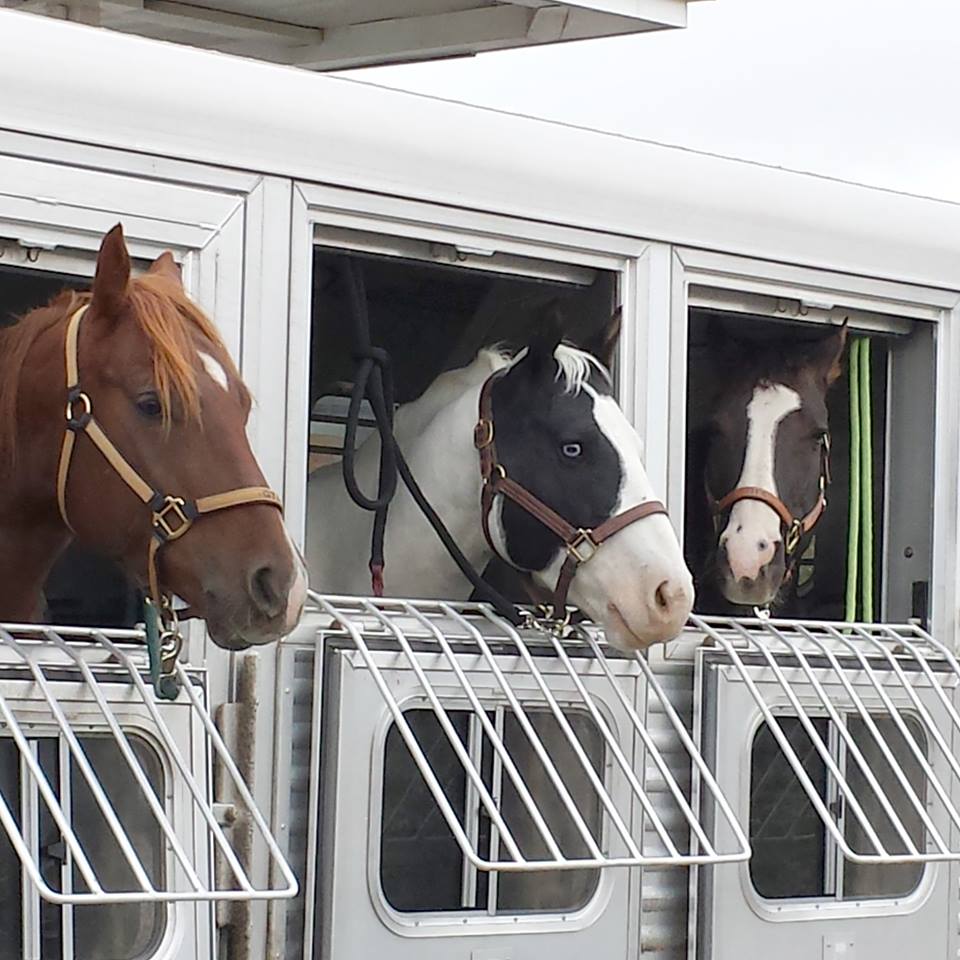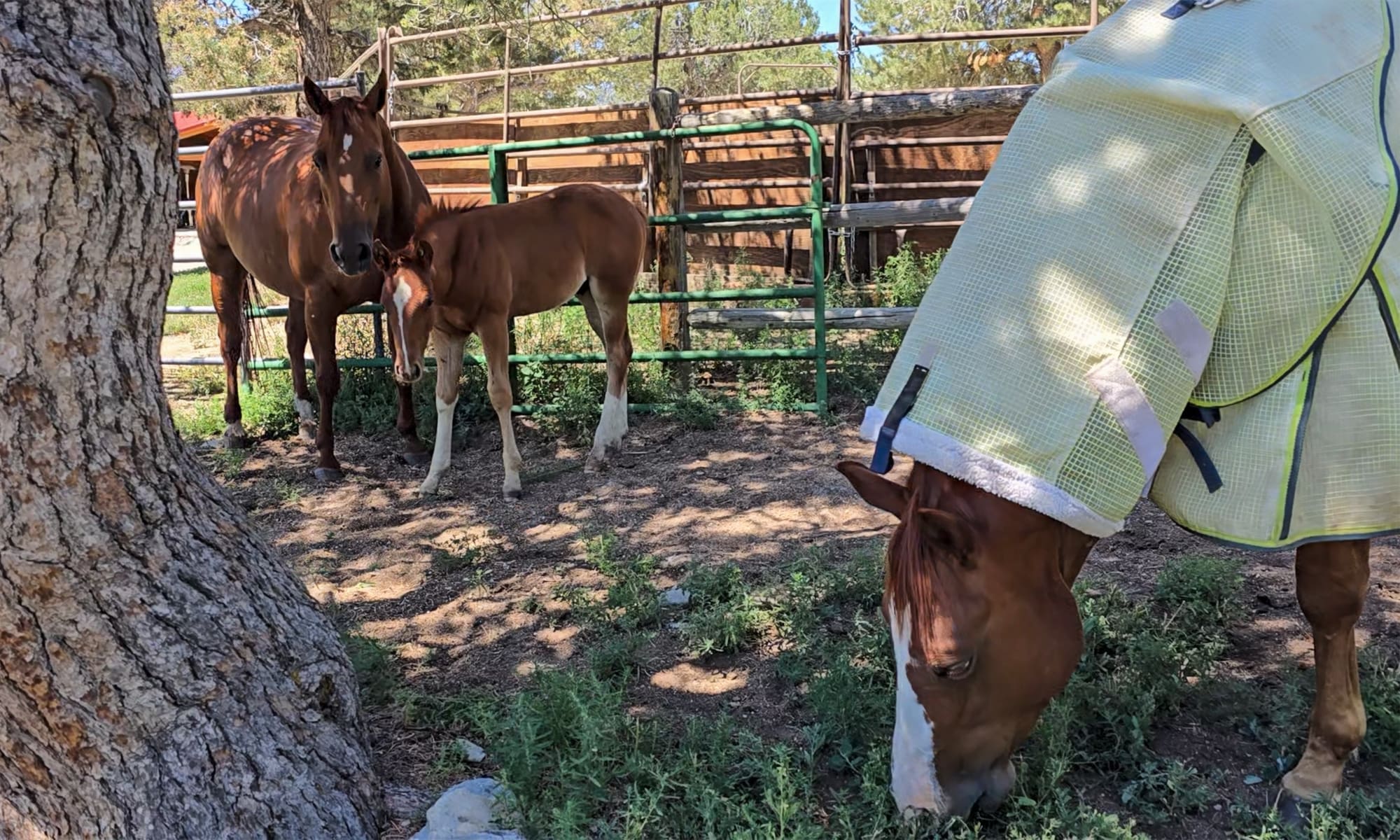
Here on my ranch, we now have a herd of five horses. Three geldings, plus Annie and her prized foal, Rip. I am happy to report that they are now all running together again as one happy herd, frolicking in the fields the way horses were meant to exist.
Annie’s colt was born May 17th in the middle of the morning in her fully enclosed foaling stall. By that afternoon, Annie and her colt were ushered briefly outside into her attached run, to get some sunshine and for the newborn colt to stretch its legs. Then they returned to the enclosed stall for the night. (Side note: mountain lions are prevalent in our area, and newborn foals and calves are a delicacy, so we are very careful!)
The next morning, at 24 hours old, I put a tiny newborn halter on Rip, and we “led” the mare and foal up to the grassy paddock, a few hundred yards away (really more like ushering the colt along with his momma than leading).
At this point, Annie was still super paranoid about her colt, although she became much calmer when her people were around. She not only accepts that we will take care of things to her liking—she demands it.
That first day of turnout was short, and as soon as Rip showed signs of tiring, we took them back to the stall for rest. Each day that followed, we led them up there and left Annie and Rip in the paddock for longer periods of time.
It was an idyllic crib with grass, running water and shelter. Annie could see the geldings across the driveway, but had no interest in being near them.
For two months, Annie and Rip made the trip up to the paddock and back. Most days, Rip was haltered and fake-led as we proceeded in an orderly fashion to and from the turnout. While Rip is still a long way from being fully halter trained, he understands the concept by waiting while we carefully put the halter on, walking in an orderly fashion next to mom and the human, then patiently waiting for halter removal.
As is common for broodmares, about two months after Annie foaled the shine started wearing off that rose. She began to let go of her paranoia, letting the colt wander farther off, and she was getting increasingly cranky when he got too frisky. Annie was also starting to show more interest in being with the other horses.
Casper, my husband’s ranch horse, lives in the stall next to Annie’s, and their runs share a common fence. Casper was Annie’s protector before the colt was born, and he took that role very seriously. Annie has always been easily bullied by other horses and needs protection. The closer she came to foaling, the more vehemently Casper protected her.
Then, the switch flipped for Annie—once the baby was born, she wanted nothing to do with Casper anymore. But still, every morning, they stood together sunning themselves in the first light with the colt between them (but separated by the fence).

Raised with Manners - Foundational Training for Colts & Fillies
You only have one chance to raise your young horse right.
I knew putting this threesome together would be easy. It was mostly allowing Annie some time to get used to it. After one highly supervised introduction, we began turning the happy family of redheads out together into the grassy paddock each day. All three are the same color, and they look like an atomic family. Annie was relieved to share parenting duties, and Casper proudly stepped up to the plate.
Each day, one of us would lead Annie and Casper, while the other led the colt to and from turnout. This daily routine of haltering, leading, turning loose, then catching, haltering, and leading back to the barn has established some great habits in the youngster without any formal “training sessions.”
My endgame was to be able to turn Annie and Rip out in the main pasture with the other horses. Two more geldings needed to be introduced, watching them closely for signs of possessiveness or aggression. These kinds of reactions are rare in horses, but possible. However, knowing the two geldings as I do, I wasn’t concerned.
First, we introduced Abner, an older gelding and a very gentle “uncle” horse who is friends with everyone. Conveniently, Rich had hauled Casper away from the ranch for the day, which simplified matters.
With Annie and Rip in the big paddock attached to our barn, we led Abner out there but kept him in-hand. Annie let him know in no uncertain terms, “DO NOT TOUCH MY BABY!” We gave Annie a few minutes to chill out, and Abner tried to look invisible, showing complete disinterest to the colt. To my pleasant surprise, Rip was very cautious, staying close to mama, showing some interest in the new horse but not causing any trouble. In short order, we turned Abner loose, and as promised, he kept his distance from the pair.
A few days later, it was time to introduce Tom into the mix. He’s a somewhat rambunctious 5-year-old, and I knew Annie would be very agitated by him.
We used the same routine, leading Tom into the paddock that Annie and Rip were already in. I led Tom near them, and Annie came uncorked—charging, teeth bared, squealing, wheeling, and kicking. Tom maintained a polite distance and acted extremely passive, but did not give ground.
After a few minutes, Annie settled down, Rip remained cautiously by her side, and Tom acted very responsibly, so I turned him loose. His tactics for getting closer to the colt were fun to watch.
He nonchalantly sauntered near them, looking the other way, as if only interested in the weeds. Annie would charge, snarl, and kick. Tom would look away and ignore her, but would not give ground. If she moved away, he closed the gap and gradually made the acceptable distance smaller.
Within about 10 minutes Annie accepted that Tom was not a threat to her colt, and that he could and would come close enough to engage with Rip if he wanted to. It wasn’t long before Rip was tentatively nosing Tom and getting to know him. Once he got his point across, Tom left Annie and Rip alone and went to join his pal Abner on the other side of the pen.
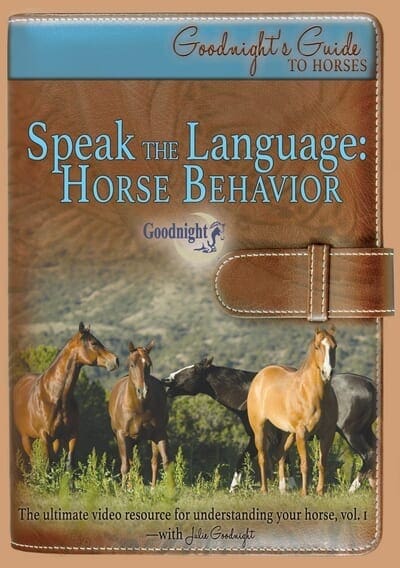
Speak the Language: Horse Behavior
The Ultimate Resource for Understanding your Horse
Learn the unique characteristics of a horse’s natural behavior so you are safer, more effective and can better relate to the needs of your horse.
Our final step was to turn all five horses out together into the pasture. The next morning, we returned to our pre-foal morning turnout routine, opening the stall doors one at a time as each horse exited the barn into the paddock. Then as a group, they ran off to the pasture, kicking up their heels.
Rip was just shy of three months old the first day he ran with the herd. It was an exciting morning and there was a bit more running and bucking than usual.
Now Casper is more paranoid about Rip than Annie. Tom once again made a point of proving to both Casper and Annie that he could get close to the colt if he wanted to. Then he was content to hang out with Abner and leave the three redheads alone.
This has been our routine for several days now, and I am happy to report that our herd has fully settled in together. While they now act as one herd in many respects, they often divide into two factions. Life is good at the ranch.
Rip has proven himself to be smart and cautious. It’s important for him to learn normal social skills, manners and boundaries from other horses at this tender young age. The only downside is that Rip is no longer doing daily haltering and “leading” sessions, but I’m not too concerned about that.
I still occasionally do short handling sessions with Rip when he’s in his stall or run. Just a few minutes here and there, saying hello, giving him a scrumptious scratch, always leaving him wanting more attention from me.
I also rub on UltraShield Green to protect him from flies, which has the added benefit of desensitizing him to touch. I’ll hold him still for just a few seconds, and as soon as he relaxes, I release him. For now all he needs to learn is just enough ground manners to make him manageable and to keep us all safe. What’s most important is that Rip doesn’t learn behaviors that will be counter-productive to future training.
We are careful not to allow him to put his lips on us, and he gets an occasional scolding if he nips. That’s perfectly normal behavior for colts, but we don’t want to do anything to encourage it. It is best to avoid situations that might lead to nipping or biting.
If it cannot be avoided, a simple flick of a finger on his muzzle is enough scolding. Walking away from him when he gets obnoxious is a very effective means of teaching him appropriate behavior around humans (that’s why you always leave them wanting more). Always watch your backside and maintain clear boundaries.
Learning daily routines is easy, and there’s really no need to “train” a foal beyond minimal handling skills. Horses are such fast learners that when they’re older, the training goes fast!

